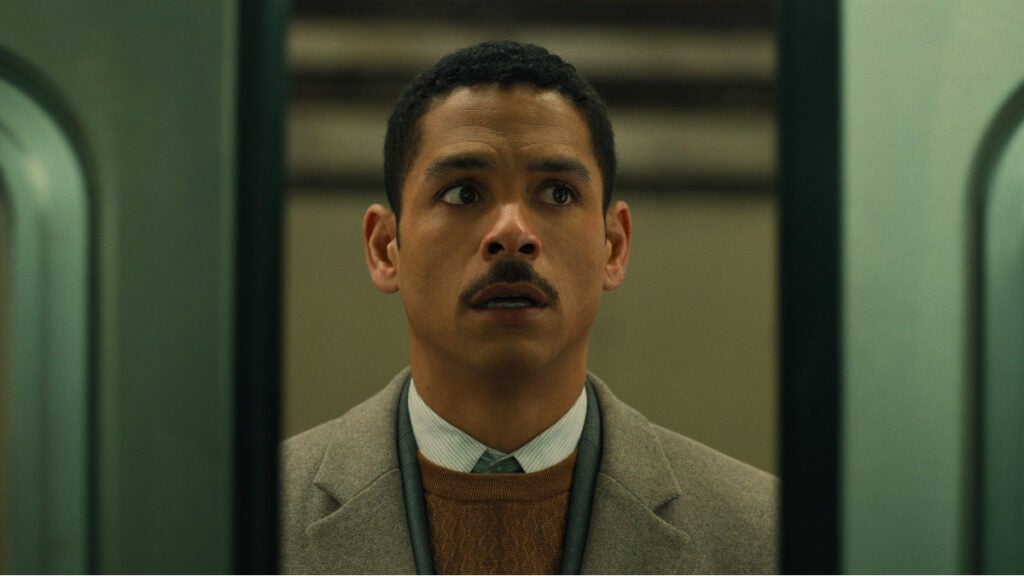Time Travel Is a Mixed Bag
[ad_1]
If Season 1 of the Emmy-winning Netflix series “Russian Doll” was a tango with death, then the long-awaited Season 2 is a tarantella with time.
Executive producer, showrunner and star Natasha Lyonne returns as Nadia Vulvukov, the wry, chain-smoking New Yorker with multiple vices — among them an uncontrollable time-traveling habit. Nadia and her companion Alan (Charlie Barnett) have broken free of their Season 1 “death loop,” only to find themselves traveling back and forth through time in Season 2 through a transtemporal New York City subway car that’s bigger on the inside.
The writing team, headed up by showrunner Lyonne and co-executive producers Amy Poehler and Leslye Headland, creates a mind-bending time travel story this season. Unfortunately, while fascinating, the sophomore season doesn’t quite have the magic of the zeitgeist-capturing first season.

“Russian Doll” Season 2 begins four years and a week shy of Nadia’s 40th birthday, as she visits her godmother Ruth (Elizabeth Ashley) at the hospital. Then, headed downtown to see her bestie Maxine (Greta Lee), Nadia hops on the southbound Manhattan 6 subway train only to be transported back to 1982… a week before Nadia’s actual birth.
And that’s not the really weird part.
Pulled out of time, Nadia is brought face-to-face with unresolved elements of her past. Including decisions that her mother and grandmother made that still resonate with her. Unlike Season 1, Nadia isn’t recounting her family history. Instead, she’s experiencing it firsthand with a new mind-bending powerset. Using train car #6622 as her own personal TARDIS, Nadia can control when she travels back in time, and she doesn’t have to fall down a flight of stairs and break her neck to do it.
Alan also journeys through his family history via another train, but he travels in a different direction. His destination is completely different from Nadia’s. Careful not to disturb anything that could alter time flow, Alan approaches the entire ordeal like the prime directive. Ultimately making his trip more introspective for him.
If there are rules to time travel, Nadia never got the memo. On a quest to find her family’s missing Krugerrands stolen by Hungarian Nazis during WWII, Nadia relentlessly bounces from one time period to another, manipulating people and situations in ways that she feels will retcon the future to the storyline she has written in her head. But unfortunately, her machinations are fruitless as her present constantly resets itself back to the timeline she is so desperately trying to alter.
But with time travel comes perspective. For example, Nadia’s mother, Nora (Chloe Sevigny), was written off as “crazy” by Nadia’s own grandmother. But in the 1980s, we see Nora living in an apartment with black mold, making it possible that her initial hallucinations might have been an untreated symptom rather than schizophrenia.

New York City is the other star of “Russian Doll” this season. We hop to famous spots in time all over Manhattan using clever visual cues to indicate periods. So, for instance, we know that she’s commuted to the past whenever we see Nadia smoking on an R-32, using a phone booth, or staring at TVs in Crazy Eddie. But Season 2 isn’t all 1980s big hair, boom boxes, and subway stops. The series shot on location around Europe and in Budapest, Hungary as well.
The creators leaned into Nadia’s Hungarian Jewish past this season, even switching languages depending on when and where the character is at any given time. A task Lyonne took seriously as her signature New York lilt dipped in and out of English, Russian, Hungarian, and Yiddish throughout the season.
The only downside to Season 2 of “Russian Doll” is that Alan’s story doesn’t seem to get the same care as Nadia’s. Important moments of his seemed abbreviated, possibly in favor of a shorter season (Season 2 consists of seven episodes vs. eight for Season 1). For instance, Nadia is just as surprised as the audience when Alan admits that he’s fallen for a man he’s met in his travels. Unfortunately, his queer journey (and the blink-and-you-miss-it transgender storyline) are dropped almost as quickly as they are revealed. In addition, we only briefly meet Alan’s mother and as we travel with him through a segment of his grandmother’s life, we don’t get to see or learn half as much about his family as we do Nadia’s.
Ultimately, Nadia’s path this season is one of forgiveness, not for herself, but for her mother, grandmother, and all of the women in her family who did the best they could with the hand they were dealt. An enjoyable watch, the time-traveling train saga of “Russian Doll” Season 2 will take you on a trippy ride, but ultimately leaves you one stop short of Season 1’s emotional magical destination.
[ad_2]
Source link
